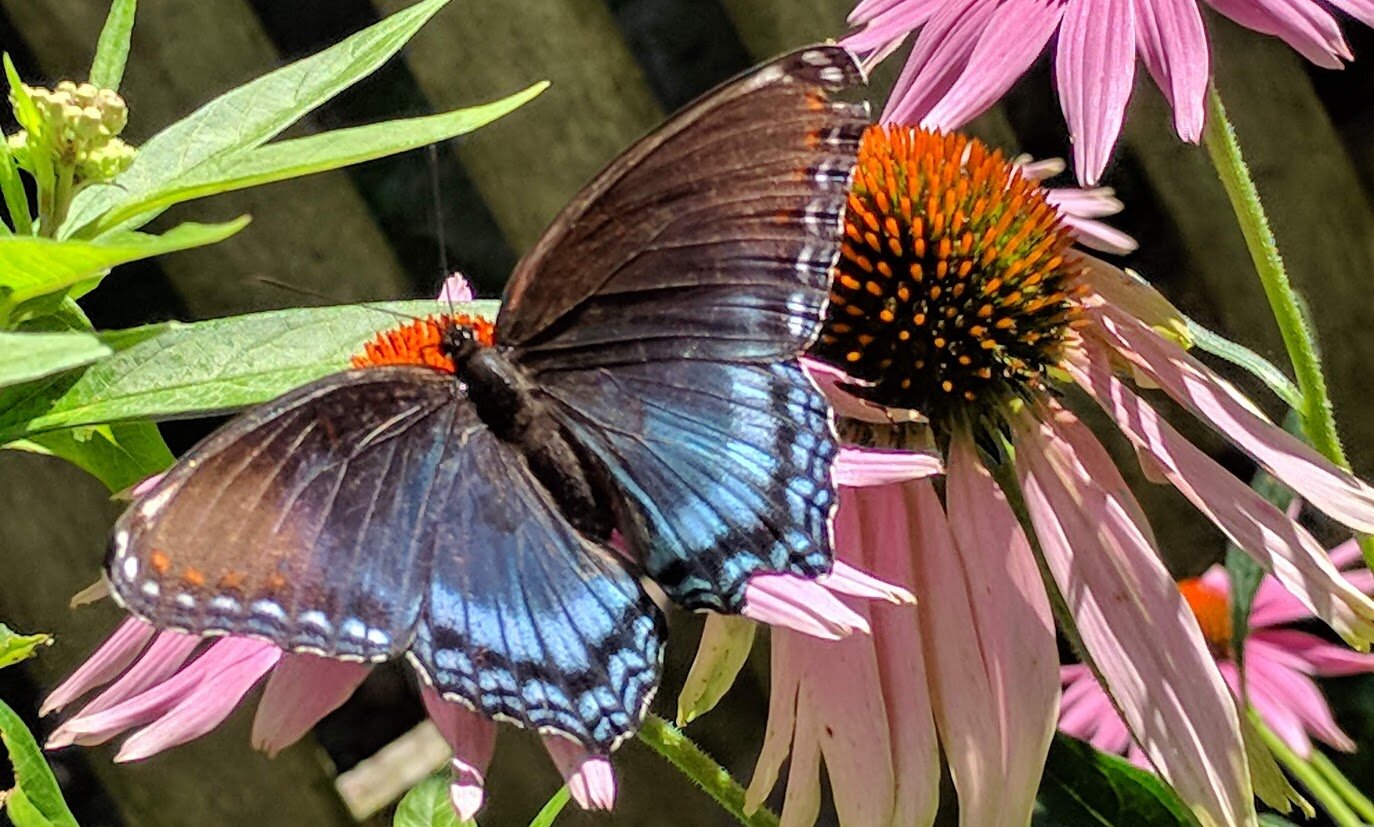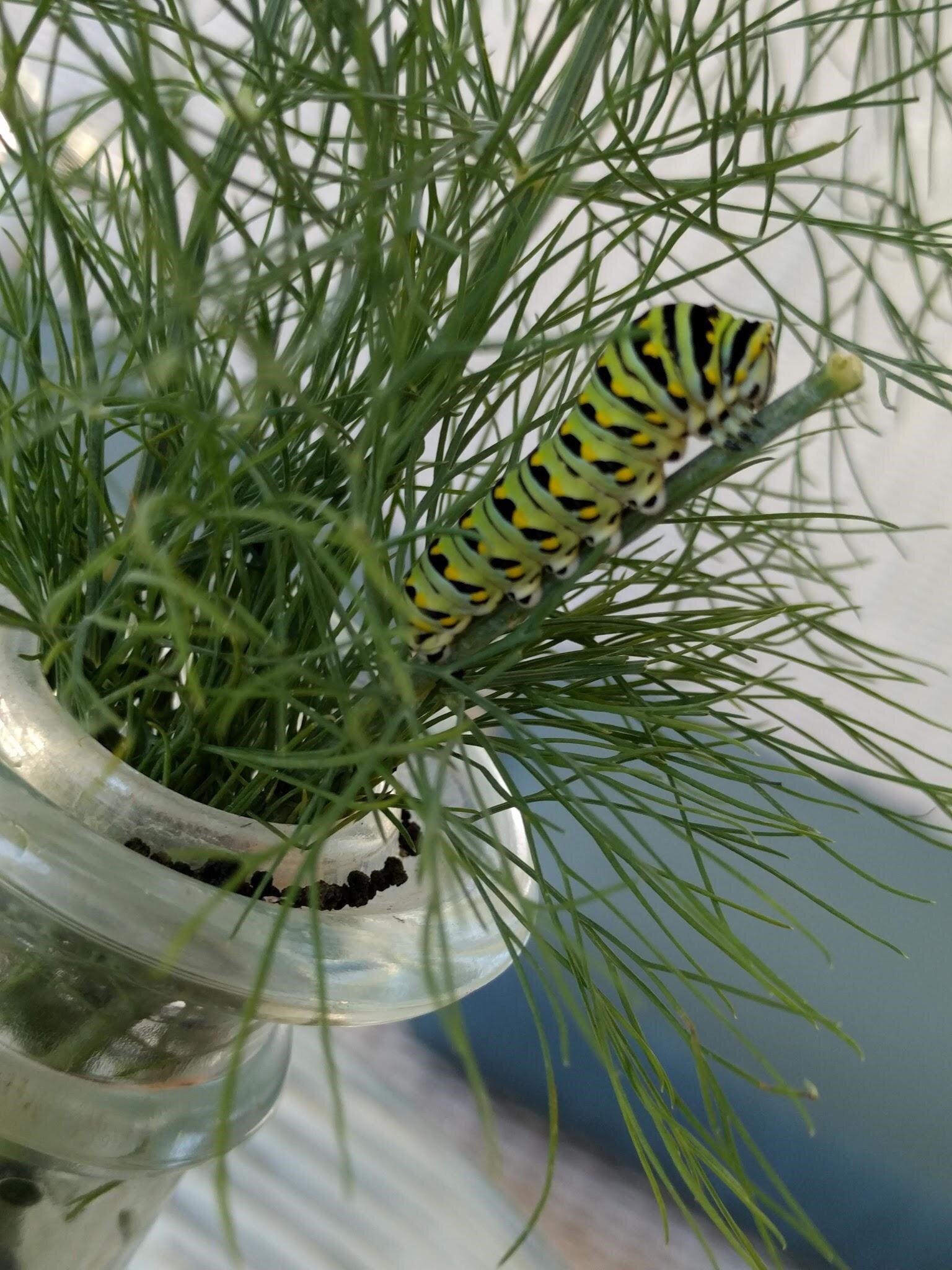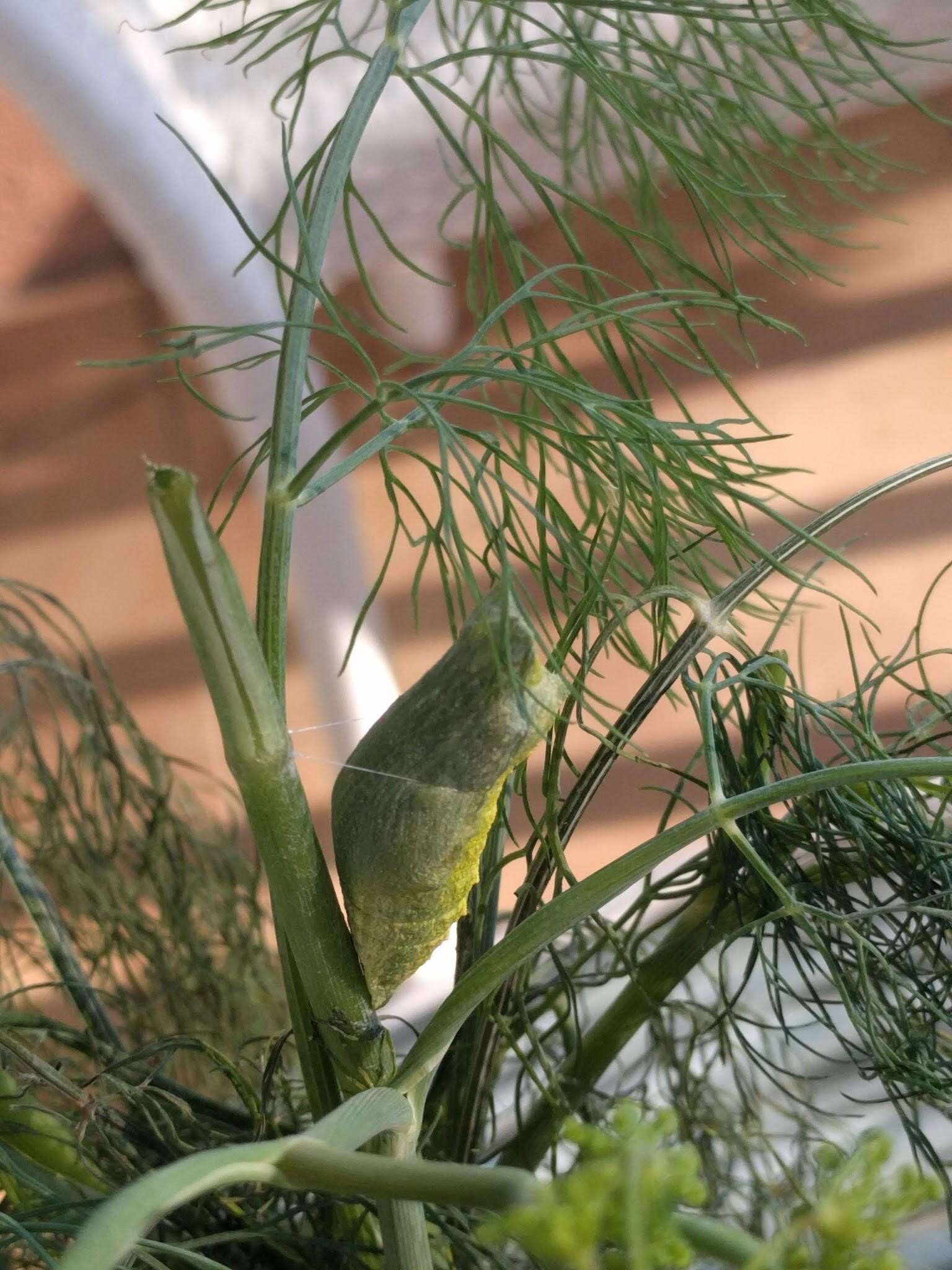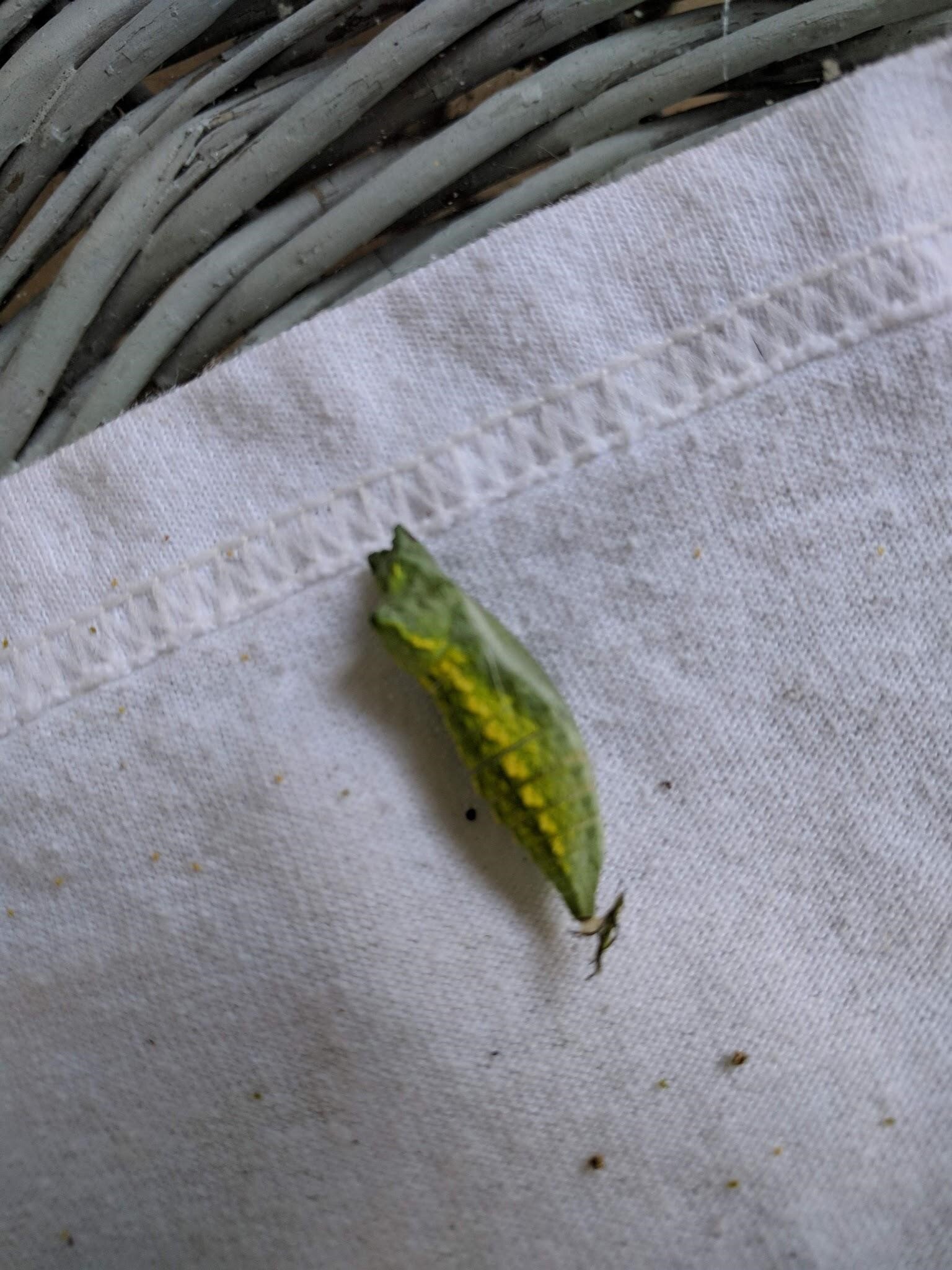An alternative title for this blog post could be how to create an enchanted garden. An enchanted garden is a garden with butterflies fluttering through it almost non-stop on sunny mid and late summer days. That describes my back yard. Every day in July and August, Monarchs and Cabbage Whites are fluttering through my yard and stopping to sip nectar. I occasionally see other butterflies, including Tiger Swallowtails, Black Swallowtails, Silver-Spotted Skippers, Red Admirals, and Painted Lady butterflies.
This Tiger Swallowtail butterfly is drinking nectar from a zinnia flower in my garden. Notice that one of the “tails” on the swallowtail is missing.
The secret to an enchanted butterfly garden is planting host and nectar plants for the butterflies that you want to visit you. Host plants are plants that the caterpillars eat. For monarchs you need to plant different kinds of milkweed, because milkweed is their host plant and also a nectar plant. I’m growing common milkweed and swamp milkweed. Another kind of milkweed is butterfly weed, which has orange flowers.
A Painted Lady butterfly loves the Mexican sunflower (Tithonia) nectar. I took this photo in my backyard. Hummingbirds also love Mexican sunflower nectar.
Right now, in early August, my common milkweed is finished blooming, so the monarchs and other butterflies are feasting on tall zinnia flowers, butterfly bush flowers, Mexican sunflowers, Joe Pye weed, cosmos, and purple coneflower. I am careful to buy zinnia plants and other flowering plants and seeds that have not been chemically treated, for the well-being of my butterflies. I also do not use chemicals on my grass for the same reason.
This is a Black Swallowtail that I raised this summer. Watching butterflies through their lifecycle is a wonderful adventure! For more information, see my June 14, 2020, post Raising Black Swallowtail Butterflies.
If you want to attract Black Swallowtail butterflies, plant dill, parsley, and fennel, because that is where the black swallowtail lays her eggs, and it is what the caterpillars eat. The butterflies will sip nectar from a variety of flowers.
A rare Red-Spotted Purple butterfly is enjoying my purple coneflowers.
A butterfly that I have only seen twice in my life is a Red-spotted Purple. This gorgeous butterfly, in its caterpillar stage, eats wild cherry, aspens, and poplars. Since I don’t have any of those trees in my yard, that explains why this butterfly is a very rare visitor to my yard. So, if you are thinking about planting a tree, one of those host trees I mentioned will provide larval food for the Red-spotted Purple and may attract them to your yard.
The Silver-Spotted Skipper is absorbing nectar on a butterfly bush flower in my yard.
You may be wondering why I am writing this article at the end of the summer instead of early in the spring. It’s because if you want to plant milkweed for the monarchs, it is best to plant your milkweed seeds in the fall and let them lay in the ground all winter. Milkweed can be tricky to start. There are methods of preparing the milkweed seeds for planting in the spring, but the best chance of success is planting seeds in the fall. Once your milkweed is established, it will come up on its own in late spring or early summer.
A brilliantly colored Monarch is sipping common milkweed flower nectar. The milkweed nectar makes the Monarch poisonous to Monarch predators.
Roll out the welcome mat for caterpillars and butterflies in your yard by planting host and nectar plants especially for them. Even if you don’t have a yard, you can plant zinnias and lantana in pots on a balcony or patio to provide nectar for butterflies. Creating a butterfly sanctuary is a well worth the effort, because you will be rewarded with butterfly friends!
All photos shown in this article were taken by Jenifer Garlitz.















